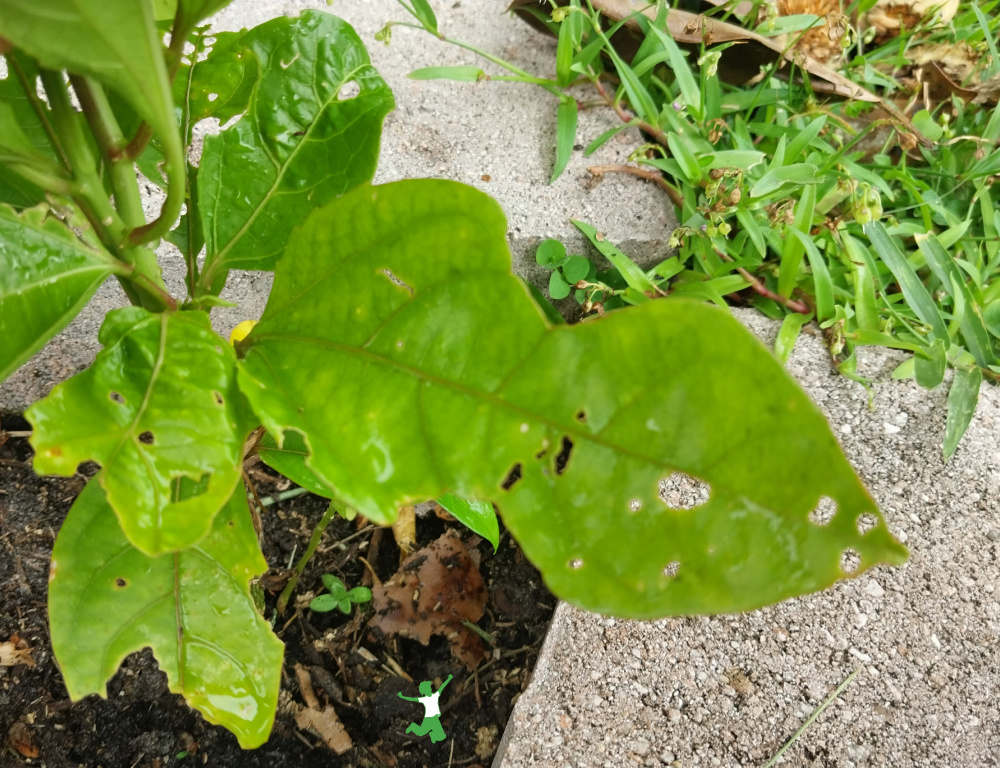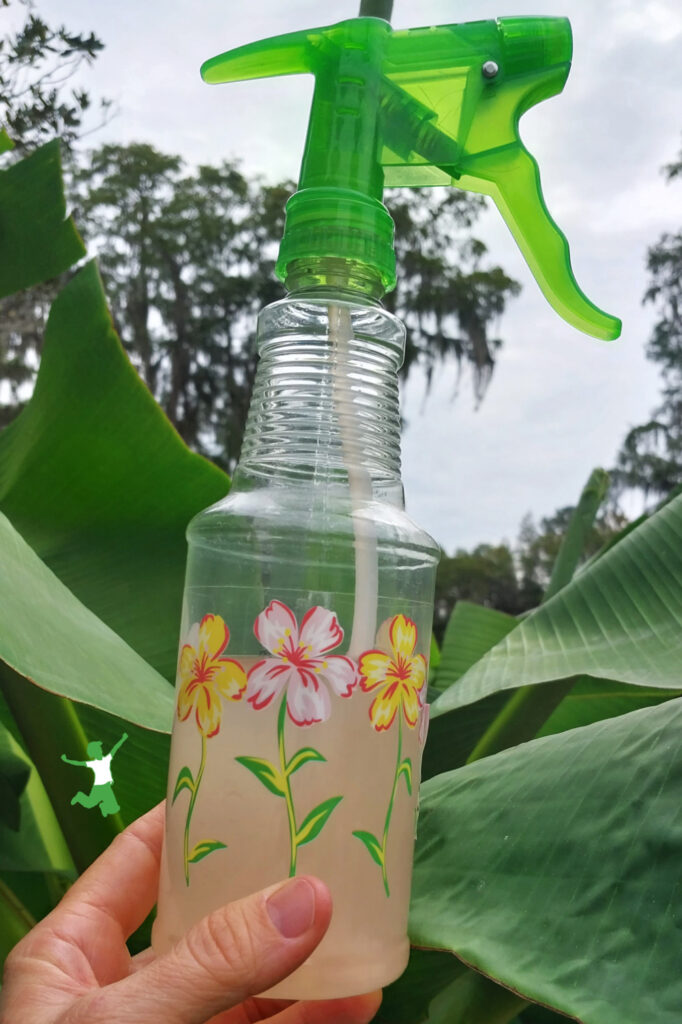Table of Contents[Hide][Show]
Organic, biological insecticide for treating destructive garden caterpillars that is nontoxic and uses beneficial microbes to prevent foliage damage.

Caterpillars are one of the biggest threats to a home organic garden. They can munch an entire food plant nearly overnight in some cases!
I wrote about my newly sprouted passion fruit vines last Spring.
Unfortunately, the tender vines consistently sustained caterpillar attacks throughout early summer.
Despite my regular application of organic insecticidal soap (which works great for some pests), the on-and-off leaf-munching continued, significantly hampering their expected growth.
Fortunately, my local vegetable farmer at Meacham Urban Farm provided crucial information that has completely stopped the caterpillars in their tracks!
I wanted to share this tip for those of you cultivating a garden this season.
BT Controls Caterpillars Organically
Joe of Meacham Organic Farm suggested that I use “Bt”, also known as Bacillus thuringiensis.
This natural soil microbe quickly controls caterpillars and worms on fruits and vegetables as well as ornamentals and trees in and around the home garden.
It works fantastically well! I saw results literally within one day after the first application.
Bt is a nontoxic, biological insecticide whose toxin targets young, immature insects (or larvae). (1)
The only downside (which is actually an upside indicating nontoxicity) is that it quickly breaks down when exposed to water, air, and sunlight.
Another benefit is that it is nontoxic to fish, birds, butterflies, and bees. (2, 3)
Thus, reapplication after rain is necessary.
In warmer months with heavy morning dew, it will need to be reapplied every 5 days or so, in my experience.
Even with no dew or rain, reapplication simply from exposure to air and sun will likely be necessary every week or two.
How to Mix and Apply
I recommend obtaining concentrated Bt in a small container that is easily tucked away in a supply cabinet. It is more economical this way and requires less packaging and storage space.
To mix, simply dilute 1/2 teaspoon of concentrated Bt solution with a pint of water in a spray bottle.
This small bottle will treat a sizeable garden as a cover spray for about a month before requiring a refill.

Bt Brands to Consider
While Bt itself is a naturally occurring microbe, it is actually used in nearly 200 commercial pesticides.
So, it is important to vet the brand you use before buying and applying to your garden plants.
This is the brand of Bt that I purchased that is listed by the Organic Materials Review Institute (OMRI). (4)
OMRI is an international nonprofit organization that determines which input products are allowed for use in organic production and processing.
While there are many Bt brands to consider, this one seemed to be the most economical for a home gardener who would not be using it in large quantities.
Do you use another brand of Bt or method to control caterpillars and other foliage-munching insects? Please share with us!
(1, 2) What is Bacillus thuringiensis (Bt) and How Does it Work?
(3) Natural Pesticides That Won’t Harm Pollinators
(4) OMRI Lists








Leave a Reply